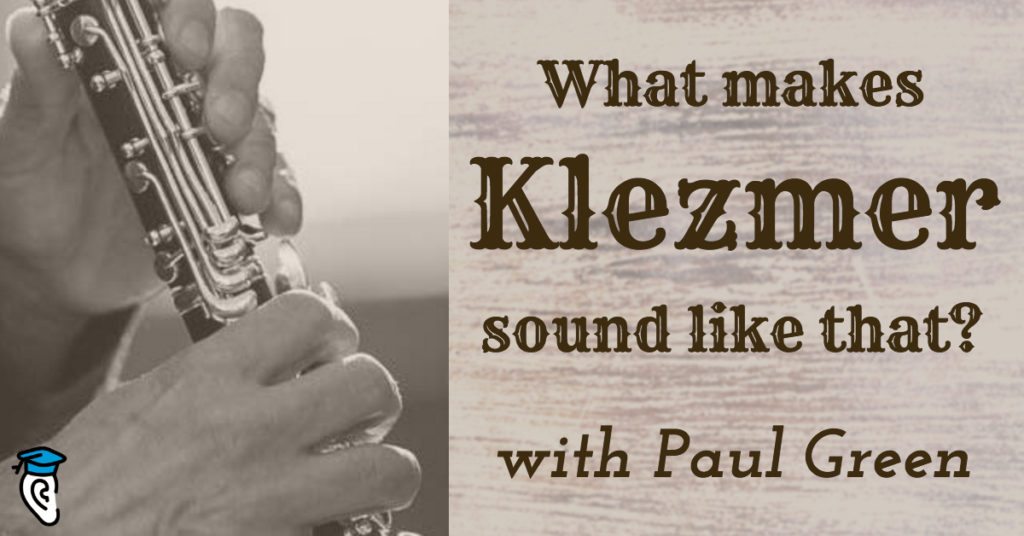Klezmer music began with the Jewish people of Eastern Europe and was a vibrant genre in the 19th century and among Jewish immigrants to the United States in the first half of the 20th century. After almost disappearing, Klezmer experienced a revival in the late 20th century, gaining many listeners and players outside its Jewish origins.
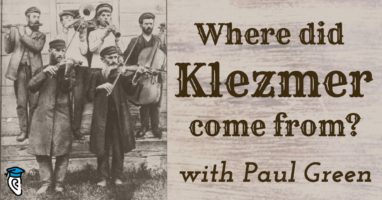
Originally a classical clarinetist, Paul Green has expanded into jazz and Klezmer, and is now bringing the two together. In Where did Klezmer Come From? he spoke with us about the origins of the fascinating, fun, and funky genre. Now let’s learn more about the music itself.
Yes of course. A lot of klezmer music – and a lot of folk music in general – is very, very strict and very metrical. For example, the Bulgars, you’re not particularly free rhythmically:
For dance it has to be strong. Now while Klezmer is predominantly dance music, there an important form for listening called the doina. It’s like a big rhapsodic, non-metrical, free-rhythm cadenza.
→ Learn more about free rhythm
Doina began as a Romanian form. The shepherds would be playing to their flock on the flute in the meadow.
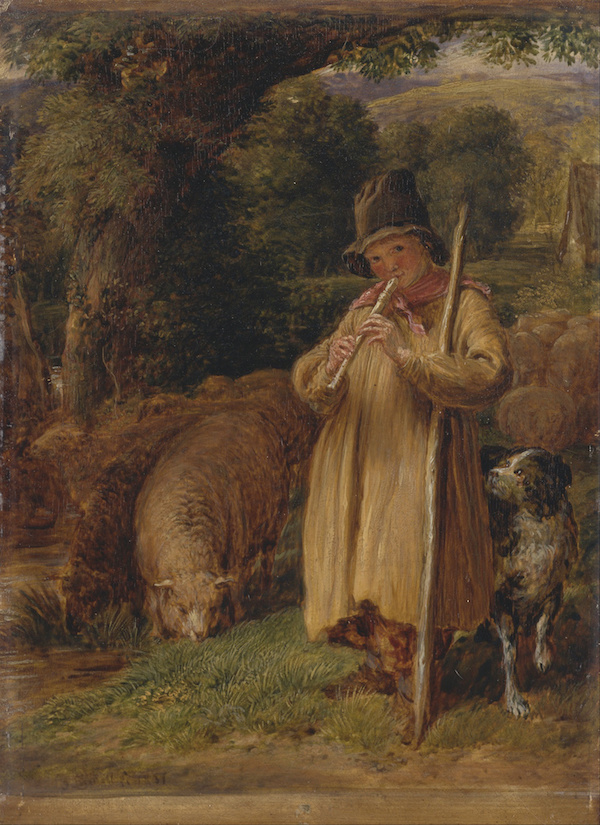
Klezmer musicians, Jewish musicians heard these and made it their own. The doina became a vehicle for the wedding band leader to show off, because it would be so virtuosic. This one is called Tarras’ doina:
You can see it’s not really in 4/4, or 3/4, or 2/4, or anything like that. This is basically just free.
I’m not playing in any set meter. For klezmer, I’m not playing this:
I’m not doing that. In a klezmer style, I play this:
See what I mean? So I’m kind of weaving in and out, and as a result, it’s much more free-form.
That’s
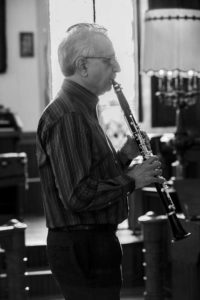 a very good question. In the 19th century, the violin was mostly the lead instrument. Hence Fiddler on the Roof.
a very good question. In the 19th century, the violin was mostly the lead instrument. Hence Fiddler on the Roof.
Jews were not permitted to play loud military band-type instruments for fear that they would become too militaristic and rise up against the tsar. The more liberal Tsar Alexander the Second came in the late 1800s freed things up and let Jews play loud instruments, and the clarinet gradually supplanted the violin.
The reason it did is it that the clarinet and the violin are both good at doing a very important part of klezmer music, the cry, or the krekhts (sounds something like “kreks” but the “kh” has a guttural sound – ed.). It’s like this. if you take a note, and you want a cry a little on it, you go like this:
That kind of cry comes from the old Jewish cantorial style of singing. The violin is good at that, the clarinet is good at that, so those two instruments became the lead instruments.
Klezmorim – klezmer musicians – would play on whatever instruments they had. There was some percussion, violin, bass, button accordions more often than pianos – which were expensive and not often suited to the traveling klezmer lifestyle.
Once Klezmer came to the United States, New Orleans Jazz set up took hold. In today’s Klezmer, you would have some sort of rhythm section, you’d have the keyboard or accordion, maybe a bass player, and a drum set. But with Klezmer, you can get by without some of that. I’ve played klezmer concerts where it’s just me and the keyboard player.
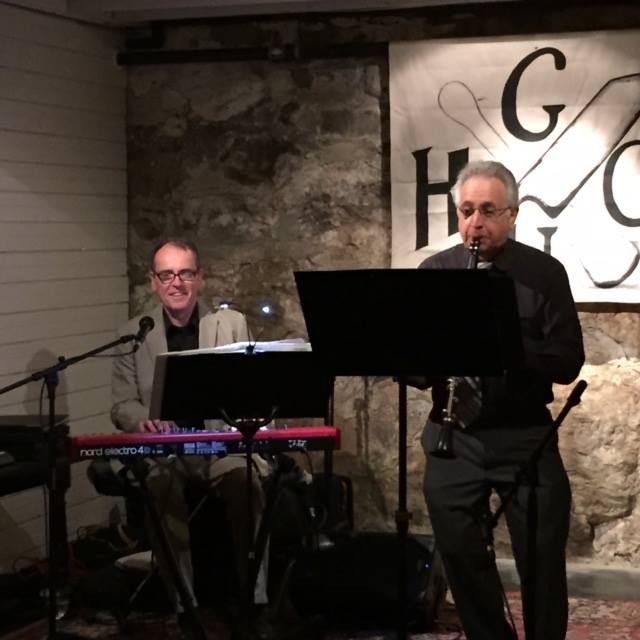
Oh yes. That’s a big difference between klezmer music and jazz. Klezmer is melodic, while jazz is much more harmonically based.
With klezmer music, the chords are simpler. The melodies derive from old liturgical scales or modes. There are a couple of very prominent scales which are used in klezmer music. One is the so-called Ahava Rabboh or Freygish. I’ll play that for you right now:
The most famous klezmer tune of all time, Hava Nagila, is based entirely on that scale:
Then the second theme is the same, the same scale:
So the scale is Ahava Rabboh:
There’s no note in Hava Nagila that’s not part of that scale. Okay?
Yes.
The Misheberakh scale has a different character:
Here’s a famous tune – Nokh a Gleyzl Vayn – that Dave Tarras used to play:
Now this part of the scale:
…has a little leap:
…that gives a kind of a cry in the tune:
That:
…that’s the note that you can really wail on. See what I mean?
That’s part of the scale. There’s no note in that tune that’s not part of the Misheberakh scale.
Now there is modulation in many klezmer tunes. Most tunes have three or four parts, and each part can use a different scale.
Now there is room in klezmer music to embellish or play not just the notes on the page, as long as you use other notes in the scale that’s associated with that part of the tune that you’re playing.
Yes, but it’s not 100%. These rules all have exceptions to them. Speaking of modulation, in the old days, when a soloist would play a doina with an accompanist – organ, piano, or tsimbl (hammered dulcimer) – he would land on a note to begin a modulation, and hold it out, while the accompanist scrambled to find an acceptable harmony that would go with that note.
Jazz is the opposite. The jazz player is required to find a melody note that goes with the harmonic structure. It’s a different order of things.
The Yiddish theater – the Jewish answer to Broadway in the first part of the 20th century – was the first Jewish/Jazz fusion.
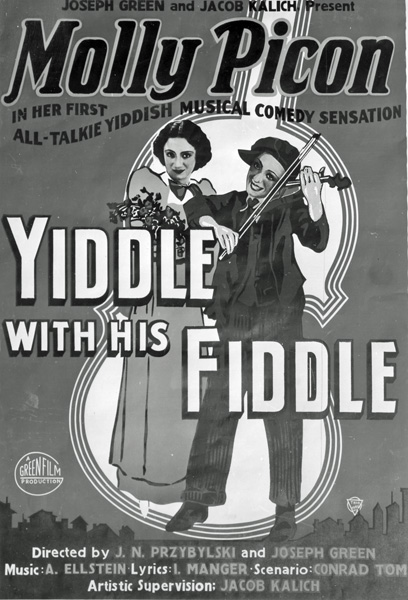
The tunes written for the Yiddish theater had a Jewish cast to them but they were written in American standard song form. So they lent themselves much more to a jazzy treatment. The most famous of course is “Bei Mir Bist du Schoen”:
Now I’m doing little cries but it also has a kind of a jazzy feel to it. That’s because it’s in the American standard song form structure. The Eastern European klezmer tunes were never in that structure. Like much folk music, they were often in two or three 8 bar sections.
I’ve gone a lot further in my own music. I’ve taken modern jazz tunes and used Jewish scales and melodic elements to give them a Jewish cast, or I’ve taken Jewish tunes and jazzed them up with more jazz harmonies or jazz rhythmic accents to them.
Learning to Play Klezmer
For those of you who are ready to move on to playing klezmer music yourselves, Paul recommends several books, among them “The Compleat Klezmer”, by Henry Sapoznik and “The Jewish Fake Book”, by Velvel Pasternak. Of course, listening carefully to recordings is indispensable to really absorbing the style, and playing from “the inside-out,” as Paul calls it. Paul recommends listening to classic 20th-century clarinetists Dave Tarras and Naftule Brandwein.
Next time we meet with Paul, we’ll learn more about his own Klezmer-jazz fusion music and where this ancient genre is going in the 21st century. Until then, you can listen to Paul’s music and bands at PaulGreenMusic.com.

